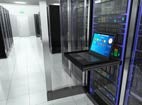The hard disk drive’s utility in enterprise settings has been under question since the first enterprise-class, solid-state solutions were introduced nearly five years ago. But now it seems a new challenge is on the horizon, not from advanced technologies like Flash, but from a perceived lower order of storage: consumer disk drives.
A recent blog post from cloud backup provider BackBlaze details the company’s use of both consumer and enterprise-class drives for its Storage Pod service and its own administrative and transactional applications. Over the past two years, the company reports that it has racked up 368 drive years with the enterprise systems—primarily Dell PowerVault and various EMC solutions—and 14,719 drive years with consumer-grade technology. In that time, it reported 17 enterprise-class failures and 613 consumer failures, which produces an annual failure rate of 4.6 percent and 4.2 percent, respectively. So with lower costs and better reliability, why bother with an enterprise drive?
Very impressive results, says Seagate’s Mark Wojtasiak, but let’s be clear about one thing: BackBlaze has a unique architecture that was built from the ground up around consumer storage technology, so its experiences aren’t likely to be reproduced by the enterprise industry in general. If you look closely, you’ll see that BackBlaze uses primarily nearline 7200 rpm drives for its enterprise infrastructure, which are about as close in performance as you can get to standard client-side 3.5-inch drives. But different applications require different levels of performance, so it would be a mistake to think that you can swap out top-tier devices en masse and replace them with standard PC drives. The same, by the way, can be said for trading all-storage-array disk drives for solid state.
And the fact remains that development of enterprise-class storage continues unabated. Western Digital, for example, recently unveiled a new helium-filled device that reduces friction between internal components and allows up to seven platters per drive, which is a 50 percent capacity boost over current air-filled devices, even while it cuts power consumption by a quarter. The drive is also about half as heavy and provides a longer lifecycle due to reduced wear on mechanical systems. (Still unclear, though, is whether audio recorded on the drive comes out sounding like Donald Duck.)
If helium does catch on, it could also allow drive manufacturers to break the 15k rotational speed that has represented state-of-the-art for the past decade or so. Right now, a 3.5-inch platter working at top speed is travelling at about 150 mhp on the outer edge, according to flashdba.com—any faster and the tornado effect inside the housing would prevent the head from reading the data, unless of course it was actually touching the platter, which would lead to a host of other problems. Other workarounds besides helium exist, but the question is whether any of these can be implemented at reasonable cost. And since processing technology is already multiple orders of magnitude ahead of magnetic storage, it is doubtful that any mechanical solution will produce parity with server and network infrastructure any time soon.
But getting back to consumer drives in the enterprise: Certainly, any low-cost solution that can perform necessary functions is a welcome addition to the data center. And indeed, a mixed bag of storage solutions, ranging from disk to solid-state to advanced-memory solutions ensures that organizations will have a diverse array of solutions to throw at any challenge.
But beware of headlines claiming “Consumer Drives Just As Good As Enterprise Technology.” Sometimes they are, but usually they’re not.



